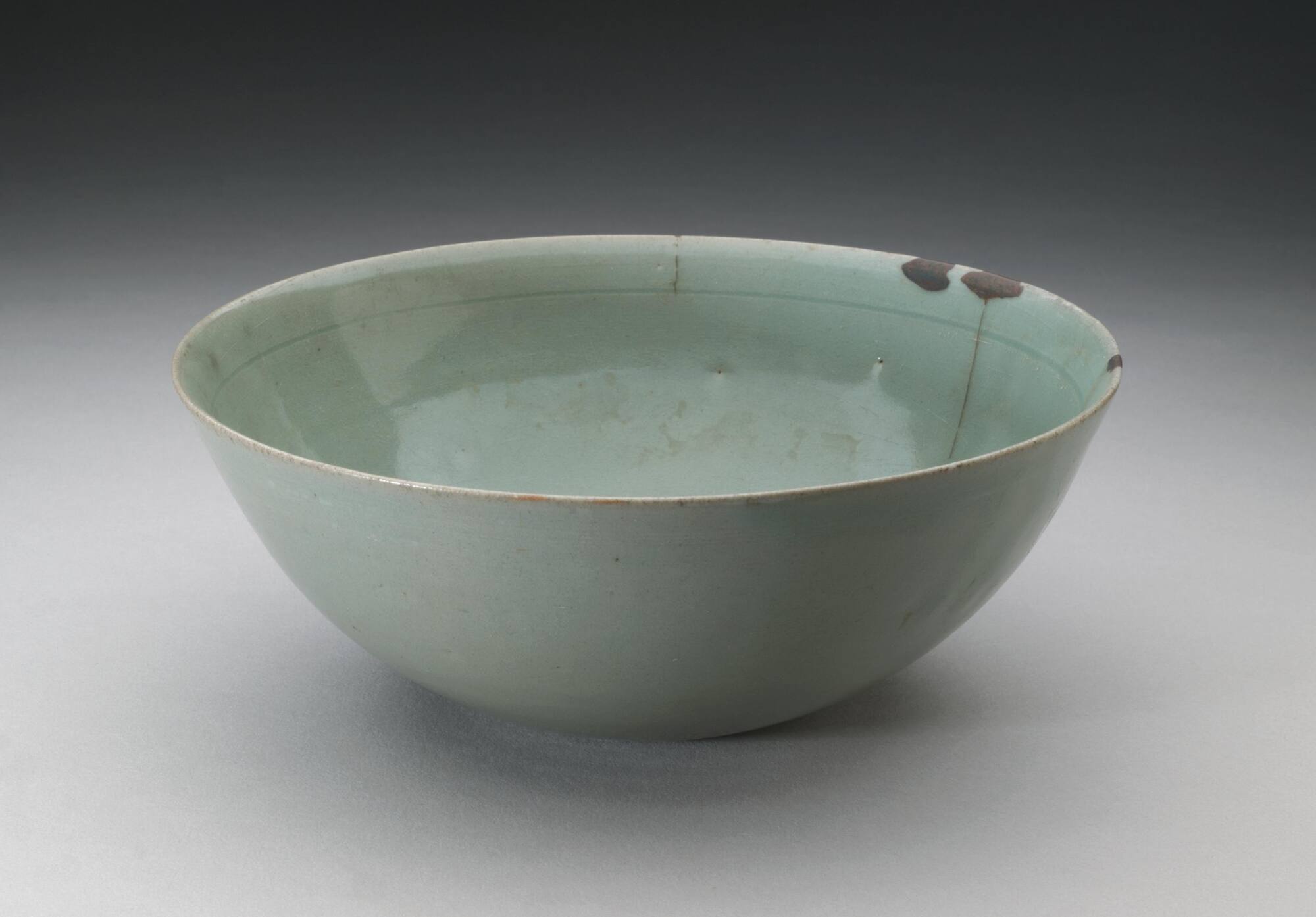
Object Details
Culture
Korean
Medium
Stoneware, celadon green glaze
Dimensions
3 × 7 3/4 inches (7.6 × 19.7 cm)
Credit Line
Gift of Colonel John R.Fox
Object
Number
65.302
BRIEF DESCRIPTIONThis is a ceramic bowl that was once part of a set of three to four bowls of differ(…)
BRIEF DESCRIPTIONThis is a ceramic bowl that was once part of a set of three to four bowls of different sizes.WHERE WAS IT MADE?This bowl was made in Korea during the Goryeo period.HOW WAS IT MADE?This bowl was made on a potter’s wheel. The potter’s wheel came to Korea from China over 2000 years ago, and enabled potters to make vessels more quickly and more uniformly. This bowl was made to nest with other bowls of the same form in different sizes. The green glaze on this bowl is known in the west as celadon. The glaze contains iron oxides, which turn green when the vessel is fired in a reducing atmosphere. This technique came to Korea from China, along with a new kind of kiln construction. Goryeo ceramics were fired in long kilns (up to 60 feet long and four feet wide) built into the hillsides so that they climbed upwards. The insides of the kilns were lined with clay, and wood was used as the primary fuel for the fire.The kilns were supervised by government officials, and most of the ceramics were made for members of the government and other aristocratic families. Potters did not enjoy high social status, nor were they regarded as artists in the way that painters were.HOW WAS IT USED?This bowl was used for serving food. During the Goryeo period, people ate a diet that consisted mainly of rice, vegetables, and legumes such as soybeans. Fermentation was used to preserve vegetables (called kimchi) and in some areas noodles made from buckwheat or wheat were served on special occasions.WHY DOES IT LOOK LIKE THIS?To keep one bowl’s base from scratching the interior of another, nesting bowls were made without bases or “feet.” Instead, the base is slightly hollowed out and the edges are smooth. The only decoration on this bowl is an incised line that runs along the inside, just below the rim.












